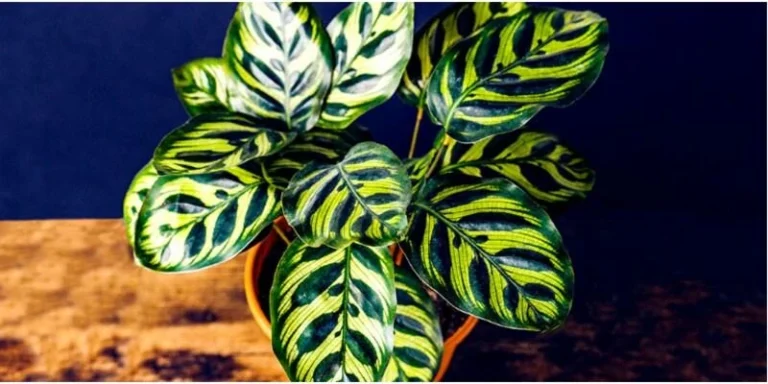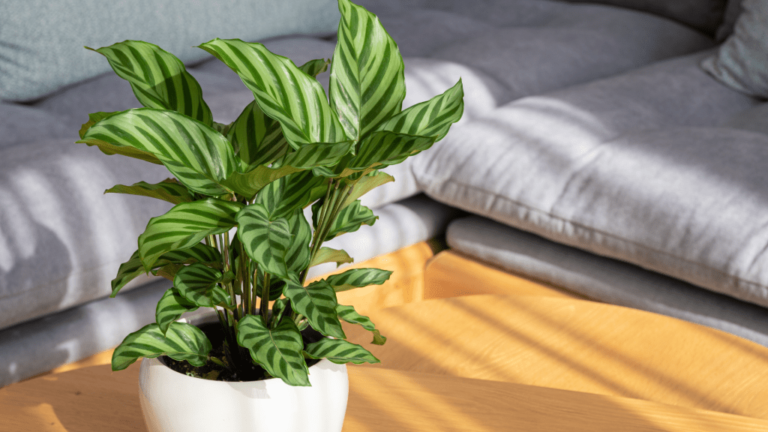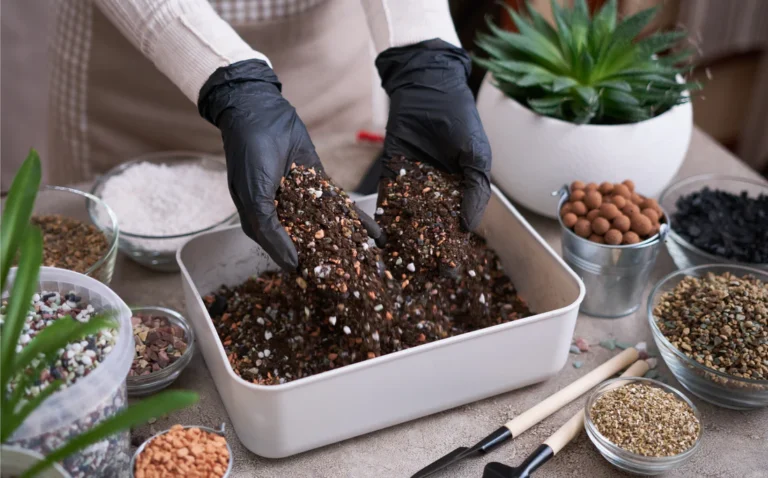How to Propagate Calathea Plants? Methods and Steps to Follow
Delving into the journey of Nurturing Calathea is filled with learning and fascination, especially when we project into the realm of propagation. Propagation is an easy, cheap, and effective way for plant owners to expand their Calathea collection or manage plant size. But how do we propagate Calathea plants?
Calatheas are best propagated through division, where the mother plant is divided into multiple plants at the roots and repotted in new pots. They can also be propagated through seeds, but this method needs to be more effective and suggested.
This guide aims to focus on how to propagate calathea through different methods, providing step-by-step guidelines and invaluable tips to ensure your success.
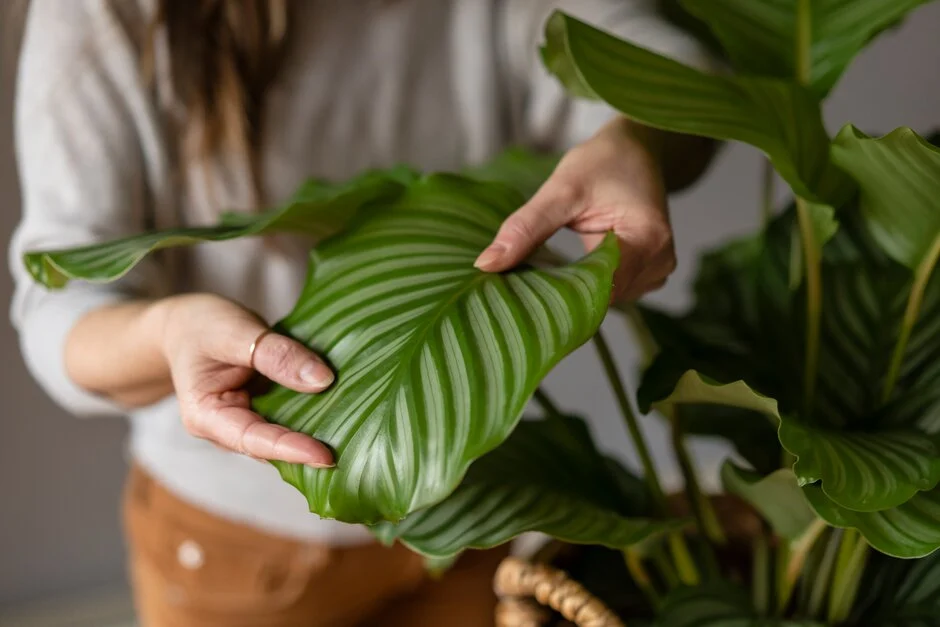
Why Should You Propagate Your Calathea Plants?
Propagating your Calatheas is one of the great solutions to many issues and is an effective way to grow new tropical plants indoors from existing ones. Calatheas can thrive when provided with ideal growth conditions and outgrow their pots. This leads to their root bond.
Dividing and repotting your plant will be a great way to give it more space and reduce the amount of root mass in the pot. This results in healthier and more vibrant houseplants.
Different Ways to Propagate Calathea Plants (Division & Seed Propagation)
Calatheas can be propagated through seeds or division. Other methods, such as cutting and air lying, are not effective and slow.
Propagation Through Seeds
Calathea propagation through seeds is not an effective method as it consumes time. But it can save money for you.
The seeding process works best during the springtime. Seeds will germinate within 2-4 weeks.
Fall can also be a viable option for propagating indoor plants, but cold weather will slow your plant’s growth rate.
Here is how you can propagate your Calathea plant through seeds:
Division Propagation
Growing Calatheas through division is one of the simplest methods of propagating a houseplant. In this method, a mother plant grows and produces clumps to the sides. These clumps can be divided and grown out. When repotting your plant, you gently divide the plant stems and repot them into separate pots. Calatheas have weak roots, but you will get excellent results if you carefully remove them.
Tools Needed for Propagation of Calathea Through Division
Before propagating your Prayer Plant, all your equipment must be ready to go. This approach makes the propagation process easy and lowers the stress your plant experiences.
You need the following things to grow a new plant through this process.
What Are the Steps to Propagate Calathea Plant?
Calatheas are not complicated for most to grow indoors; they need humidity and regular watering and must be saved from direct sunlight exposure.
When you meet these requirements and have a mature plant, you can propagate Calathea plants. The best type is propagation through division in spring or summer.
The following steps are involved in the propagation of Calatheas through division.
1. Water Your Plant
Water your plant well and leave it to drain for an hour or more. Also, ensure you choose pots with drainage holes in the base, allowing excess water to drain out and accommodating the newly divided Calatheas.
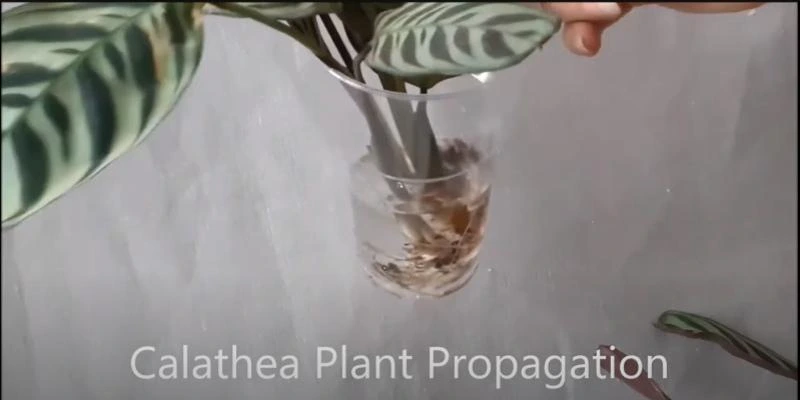
2. Disinfect the Knife or Pruning Scissors
Clean the knife or pruning scissors you might use to divide the plant.
Use hot water to clean the knife well. Cleaning your knife restricts the unnecessary transfer of bacteria during the propagation.
You can then use a disinfectant or pure alcohol to disinfect the tools.
3. Dig Out the Plant and Shake Off Any Compost From Around Rootball
Dig out the pup and remove the Calathea plant from its pot. The pup must be at least 20 cm in size.
Shake off any soil or compost from around the roots as possible. This helps you see if and how many roots the pup has developed.
If the roots are not compactly packed, remove the leafy stems with your hand. This helps you get two or three clumps with healthy roots attached.
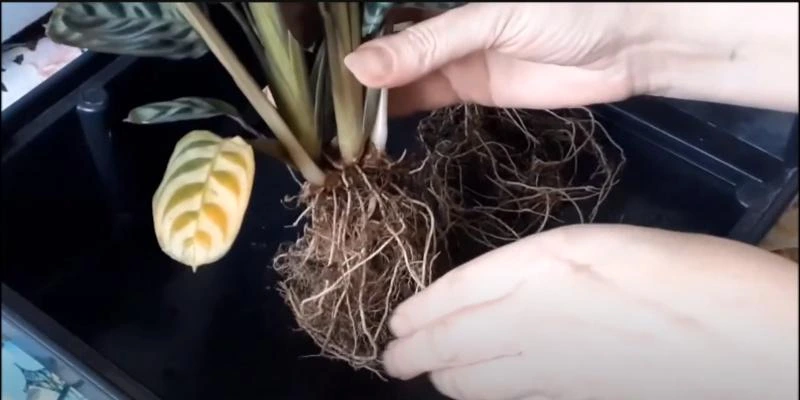
4. Cut Off a Pup to Remove Roots
Gently cut off the pup from the mother plant as close to the stem as possible.
Ensure that a divided plant has its own roots. Then, remove the roots carefully from each other.
If it still needs roots, there are few chances it will survive.

5. Repot the Cutting and Mother Plant
Finally, repot the mother Calathea and cutting. Place the divided plant in a pot containing fresh potting mix. Pour water around the cutting to keep the soil moist.
After about a month, you will see visible growth as the roots have recovered. Thus, moisten the baby’s soil during the first few weeks. This promotes rapid growth. Avoid overwatering, as it can lead to root rot.
Caring for Propagated Calathea Divisions
Propagation can be stressful for Calatheas. Therefore, the newly transplanted plants can adjust and settle into their new homes by providing ideal care. You can care for them by paying attention to their sunlight, water, and humidity requirements.
Also check How Often and When to Water Calathea?
Transplanting the Calathea Divisions
When the divisions are on their way to becoming a new Calathea plant,
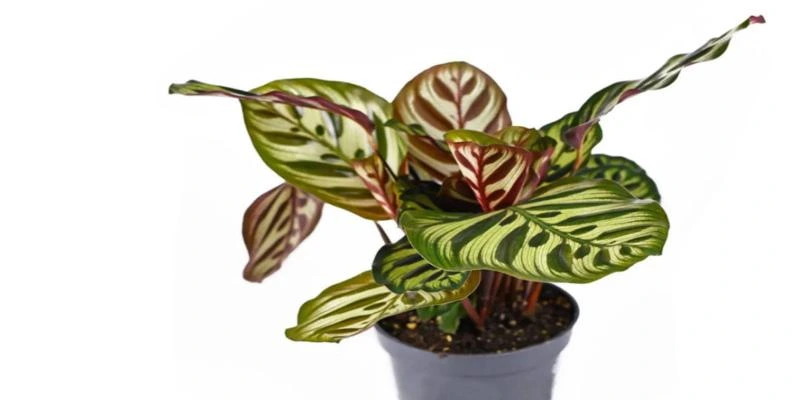
Frequently Asked Questions About Calathea Plant Propagation
Can Calatheas be propagated through cuttings?
No! Calatheas cannot be propagated through cuttings as their stems don’t contain the necessary rooting tissues for this method to be effective. They can be propagated best through the division method.
What is the best time to propagate your Calathea?
Early spring is the best time to propagate your Calathea plant, just before it starts its new growth cycle. As the plant enters a state of faster growth, propagation helps it establish itself in new pots and show quick recovery.
How to propagate a Calathea in water?
Calathea can be propagated in water only when stem cuttings are used. The method involves:
Only some Calathea species are suitable for water propagation.
Final Verdict | How to Propagate Calathea
So, how do you propagate your Calathea plants? It’s simple and easy. Two methods, seed and division propagation, and steps, like watering your plant before removing it, digging the soil, cutting the division along roots using scissors, and caring for the divisions, make the propagation process easy.
Thus, follow these methods and steps to increase the number and size of your indoor Calathea plants.

About Author
Hi, I’m Emily Davis, a passionate tropical plant enthusiast dedicated to sharing knowledge and expertise with plant lovers. Through his blog, I will provide guides, tips, and tricks for caring for tropical houseplants species like Alocasia, Anthurium, Calathea, Philodendron, Begonia, and many more that will help readers bring a touch of paradise into their own homes. With a deep love for the vibrant colors and lush textures of tropical flora, I’m committed to inspiring others to cultivate their own tropical oasis.

![Types of Calathea Plants: 25 Varieties to Grow Indoors [with images] 7 Calathea](https://tropicalplantscare.com/wp-content/uploads/2025/04/Calathea-2-768x576.webp)
